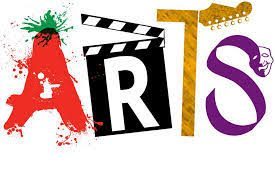Our penultimate week of arts has arrived, with a bank of knowledge already in the bag and more to learn over 2 weeks. Personally, I can see the creative benefits in my level of confidence in the arts and also as a whole human being.
Our first input of learning focused on creative dance, and the way dance can be promoted in schools. Which the curriculum engages with, in the way they inform practices children should have opportunities to create, perform and appreciate dance. A key informant of dance in the curriculum has been, Cone. (2009) who discusses how “Empowering children to create dances about what is personally meaningful presents them with the responsibility and commitment to bring their vision alive.”
As a practitioner, my role is to engage with the ten basic skills and impart this to children for them to interact with. These skills help a learner embark on skills within collaborative work, key communication and also through self-expression.
For a teacher, to positively portray dance it is vital to engage with it in schools through encouraging a creative process. This can be done through the use of images or videos in the classroom or even visiting places of dance can promote a vision of dance to our learners. These steps will encourage children in participating in the dance lessons, and the 10 basic skills, mentioned in previous blogs, is key to allow children to have meaningful, interdisciplinary lessons with dance. Through the promotion of dance in schools, performances can be created, and it can become a very topical experience for children as they can learn about different countries and cultures through dance. Even in the past few weeks of my engagement of dance I can see the benefits of it and the feeling of enjoyment that can be had in these lessons.
First, today was focused on music, where we looked at playing the glockenspiel and reading the music on the sheets to playing as a whole. I found this input difficult, as I am not a very musical person and find co-ordination of reading and playing the music quite difficult. We focused upon a musical alphabet at first, to make it easier as we understood the notes we were playing. With children this could focus upon a say, clap, play process, so they can begin to understand the rhythm and the beats of the piece of music.
These inputs demonstrated to me the way to break the music down into the layers we read it in, to add a structure to the process and the way we can repeat lines in a piece, but it is the same order within the music. Being able to understand these processes can make it more relatable for a learner in the classroom, as it did for me. This can build confidence in playing the instrument to lead to the final part of the lesson, improvisation.
“Improvisation is a distinguished feature of most music practices and children have been shown to benefit from learning to improvise in experientially different ways” (Larsson, Georgii-Hemmings, 2019)
This focused on the pentatonic scale which is the notes CDEGA. These notes will sound good whatever order they are played in so they are good for children to engage with improvisation and gain skills in performing but also active listening of others and supporting them. After a period of anxiousness before my turn, it was a very enjoyable, engaging experience.
This afternoon’s focus on dance was another fun and engaging one as we as groups took charge of the warm-up games. Each group created a different game that children could engage with, which we focused on the theme of Christmas. Engaging with a game of tig the learners would have catchers, which once an individual was tagged someone would have to wrap tinsel around the Christmas tree to free them. This can be a fun seasonal activity in which children could identify co-operative and teamwork skills. Using this gave us as students a small experience of microteaching within a dance lesson, but also an idea of how we can let children lead the lesson and the activities in dance.
Moving to the main session the focus was building on the previous two inputs of the 10 basic skills and combining to create a dance. The practice was first, as this is vital to give children the chance to work collaboratively and recap on previous learning together. The teacher can make small interventions into the dance through moments like today’s input, to make the dance aesthetically pleasing. This focuses on creating a beginning and an end pose as well as the addition of choreographic devices.
Combining these elements together involves focus upon key skills in collaboration and timings, within our groups as we pitched ideas together and figured out what worked within our routine. The next step was performing altogether and putting the whole dance together with all parts. This focused upon transitions and still within the theme of Scotland to link in our positions and movement. All this came from the learners’ work and ideas, which is easy to use within a class and can empower children.
Today’s art forms linked together in the way they can be broken into small elements or layers of the art form. This identified to me the methods we can use as educators to integrate the arts into our classrooms and build confidence within a child. As within the classroom the creative process is made prominent through the link of these workshops as they are “investigating a problem or issue, exploring multiple viewpoints and options, generating and testing out ideas, developing, refining and communicating solutions and evaluating whether or not they have worked.” (Education Scotland, 2013)
They can build up in steps to then create a final piece at the end of the process, that they can enjoy and feel empowered from.
References
Education Scotland (2013) Creativity Across Learning 3-18 [online] available: https://education.gov.scot/improvement/Documents/Creativity/CRE1_WhatAreCreativitySkills/Creativity3to18.pdf[Accessed:
Cone, T.P. (2009) Following their lead: Supporting Children’s Ideas for creating dances, Journal of Dance education, Vol 9(3), pp. 81-89
Larsson, C., Georgii-Hemmings, E. (2019) Improvisation in General Music Education – a Literature Review British Journal of Music Education, Vol 36(1), pp. 49-67


